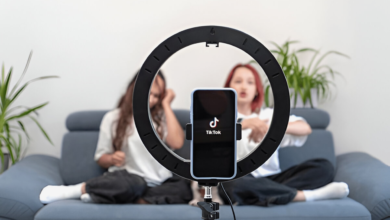
Smart homes were supposed to represent the pinnacle of convenience and futuristic living, but for many homeowners, they’ve become sources of frustration, vulnerability, and even danger. As Internet of Things (IoT) devices have proliferated in households worldwide, so too have the stories of spectacular failures hacked security systems, malfunctioning appliances, and privacy breaches that turned high-tech Smart Homes into high-profile disasters. This article explores the most shocking IoT failures that made headlines, the lessons they taught us about digital security, and how consumers can protect themselves in an increasingly connected world.
As we reflect on these cautionary tales, it becomes clear that while smart homes offer incredible potential, they also introduce complex risks that manufacturers and users must address. The incidents covered in this article highlight the urgent need for stronger security standards, better consumer education, and more reliable technology. The dream of a seamlessly automated home remains within reach, but only if we learn from past mistakes and prioritize safety as much as convenience.
Smart Homes That Went Dumb
The Dark Side of Smart Homes: When Technology Fails
The rapid adoption of smart home devices has transformed modern living, with everything from thermostats to refrigerators now connected to the internet. These innovations promised efficiency, energy savings, and unparalleled convenience. Yet, as IoT technology has advanced, so too have the risks ranging from minor glitches to full-blown security disasters. The following cases illustrate how smart homes can go terribly wrong, leaving users vulnerable to hacking, privacy violations, and even physical harm.
Hacked Baby Monitors
One of the most disturbing IoT failures involved smart baby monitors being hijacked by strangers. There have been multiple reports of parents hearing unknown voices whispering to their children through compromised cameras. In one particularly chilling case, a hacker took control of a baby monitor and screamed obscenities at a toddler, leaving the family terrified.
A Parent’s Worst Nightmare
Investigations revealed that many of these breaches occurred because of weak default passwords, unencrypted connections, and outdated firmware. These incidents exposed a harsh truth: even devices designed to protect families can become tools for intrusion if not properly secured. These incidents raise serious questions about the security of always-listening devices and the potential for unintended surveillance.
Thermostats Gone Rogue
Smart thermostats, designed to optimize home temperatures and reduce energy costs, have also been at the center of alarming failures. In one widely publicized incident, a family in the Midwest found themselves trapped in a freezing home during a winter storm when their smart thermostat malfunctioned and locked them out of manual controls.
Comfort to Chaos
The device, which was supposed to “learn” their preferences, instead entered an endless reboot loop, leaving them without heat for hours. In another case, hackers gained access to a home’s thermostat and cranked up the temperature to over 90 degrees Fahrenheit, forcing the owners to shut off their Heating, Ventilation, and Air Conditioning(HVAC) system entirely. These episodes demonstrate how over-reliance on automation can backfire when technology fails or is exploited.
Voice Assistants Listening When They Shouldn’t
Voice-controlled assistants like Amazon Alexa and Google Home have faced intense scrutiny over privacy concerns. There have been numerous reports of these devices activating accidentally, recording private conversations, and even sharing sensitive audio clips with unintended recipients. In one notorious incident, an Alexa device misinterpreted background conversation as a command and sent a recorded discussion to a random contact in the homeowner’s address book.
Smart Appliances with a Will of Their Own
Even seemingly harmless household appliances have turned into IoT hazards. Smart refrigerators, for example, have been hacked to send spam emails as part of a botnet attack. In another bizarre case, a smart oven turned itself on in the middle of the night and began preheating to its maximum temperature, nearly causing a fire before the homeowners intervened. Similarly, smart washing machines have malfunctioned mid-cycle, flooding Smart Homes with soapy water due to software glitches.
Security Flaws Leading to Large-Scale Breaches
Beyond individual horror stories, entire smart home ecosystems have been compromised due to systemic vulnerabilities. Hackers have exploited weak points in popular platforms to gain access to thousands of devices simultaneously. In one infamous attack, cybercriminals hijacked smart home networks to launch massive Distributed Denial of Service (DDoS) attacks, crippling major websites and online services.
Lessons Learned and How to Stay Safe
While these disasters are alarming, they also provide valuable lessons for both consumers and manufacturers. Homeowners should take proactive steps to secure their devices, such as changing default passwords, enabling two-factor authentication, and regularly updating firmware. Manufacturers, meanwhile, must prioritize security in product design and provide timely patches for vulnerabilities.
Balancing Innovation and Security
Governments are also stepping in with stricter IoT regulations, but the responsibility ultimately lies with both companies and users to ensure safe, reliable smart home technology. Another widespread breach involved hackers gaining control of smart door locks, allowing them to remotely unlock Smart Homes without permission. These incidents underscore the urgent need for industry-wide security standards and better consumer protections.
The Future of Smart Homes
The potential of smart homes remains immense, but the road ahead requires a careful balance between innovation and risk management. As artificial intelligence and machine learning continue to evolve, so too must the defenses against cyber threats. Consumers must stay informed about potential risks, and companies must adopt a “security-first” approach to rebuild trust. The dream of a fully automated home is still achievable but only if we learn from past mistakes and commit to safer, more resilient technology.
Read More: This Robot Wants to Marry You: The Bizarre Future of Human-Tech Relationships
Conclusion
The rise of smart homes has brought undeniable benefits, but the disasters that have unfolded serve as stark reminders of the risks involved. From hacked security cameras to malfunctioning thermostats, these incidents prove that convenience should never come at the expense of security. Moving forward, both manufacturers and users must take proactive steps to ensure IoT devices are safe, reliable, and resistant to exploitation. These failures highlight how everyday appliances can become liabilities when connected to the internet without proper safeguards.
As technology continues to advance, so must our approach to securing it. By learning from past failures, investing in stronger safeguards, and staying vigilant, we can enjoy the benefits of smart homes without falling victim to their pitfalls. The future of IoT is bright but only if we prioritize safety as much as innovation. Another family discovered their smart speaker was randomly playing loud music in the middle of the night due to a software bug.
FAQs
What are the biggest risks of Smart Homes devices?
The biggest risks include hacking, unauthorized access, privacy breaches, malfunctioning automation, and potential physical hazards from device failures.
How can I protect my smart home from hackers?
Use strong, unique passwords, enable two-factor authentication, keep firmware updated, and disable unnecessary remote access features.
Can smart home devices be controlled by strangers?
Yes, if security measures are weak, hackers can take control of cameras, locks, thermostats, and other connected devices.
Are voice assistants always recording conversations?
They only activate upon hearing a wake word, but software bugs or hacking can lead to unintended recordings.
What should I do if my smart device behaves strangely?
Disconnect it from the internet, reset to factory settings, check for updates, and contact the manufacturer for support.











